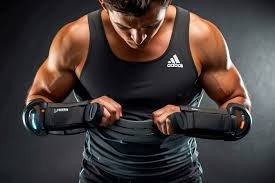Wearable Technology in Sports: How Smart Devices Are Enhancing Athletic Performance and Injury Prevention

In recent years, wearable technology has made significant strides in various fields, and sports are no exception. From fitness trackers to advanced biometric sensors, smart devices are transforming how athletes train, perform, and recover. This article explores how wearable technology is enhancing athletic performance and injury prevention, providing real and trusted insights into this evolving trend.
The Impact of Wearable Technology on Athletic Performance
Wearable technology in sports encompasses a range of devices designed to monitor and improve athletic performance. Smartwatches, fitness trackers, and advanced biometric sensors are now common tools used by athletes and coaches to gain deeper insights into their physical conditions and performance metrics.
1. Real-Time Data Collection and Analysis:
Wearable devices like smartwatches and fitness trackers provide real-time data on various performance metrics such as heart rate, pace, distance, and calories burned. For example, devices like the Garmin Forerunner series or the Fitbit Charge 5 offer detailed analytics that help athletes monitor their training intensity and endurance. This real-time feedback allows athletes to adjust their workouts on the fly, optimizing their training regimens for better results.
2. Personalized Training Programs:
Advanced wearable technology goes beyond basic metrics by offering personalized training insights. Devices equipped with GPS, accelerometers, and gyroscopes can track an athlete’s movement patterns, speed, and acceleration. For instance, the Catapult Sports’ GPS tracking systems used in professional sports collect data on player movements and workload. This information helps coaches design personalized training programs tailored to each athlete’s specific needs, ensuring that they train effectively while minimizing the risk of overtraining.
3. Enhanced Performance Metrics:
Wearable technology provides detailed performance metrics that help athletes understand their strengths and weaknesses. For example, devices like the Whoop Strap 3.0 track sleep patterns, heart rate variability (HRV), and recovery status, offering insights into how well an athlete is recovering from training. This data helps athletes fine-tune their training schedules and make informed decisions about when to push harder or take it easy, ultimately enhancing their overall performance.
Injury Prevention Through Wearable Technology
Injury prevention is a crucial aspect of sports training, and wearable technology plays a significant role in minimizing the risk of injuries. By monitoring an athlete’s physiological and biomechanical data, these smart devices can provide early warnings of potential issues, allowing for timely interventions.
1. Biomechanical Analysis:
Wearable devices equipped with motion sensors and accelerometers can analyze an athlete’s biomechanics, such as gait, posture, and joint angles. For instance, the Lumo Run sensor tracks running form and provides feedback on metrics like cadence and stride length. By identifying improper biomechanics or signs of fatigue, athletes can make adjustments to their techniques, reducing the risk of injuries such as strains and sprains.
2. Load Monitoring and Recovery:
Wearable technology can monitor training loads and recovery status to prevent overtraining and related injuries. Devices like the Oura Ring or the Aura Health smartwatch track sleep quality, HRV, and activity levels to assess an athlete’s recovery. Overtraining can lead to injuries, so by monitoring these metrics, athletes can ensure they are adequately recovering between workouts and adjust their training intensity accordingly.
3. Early Detection of Injury Signs:
Some advanced wearable devices are designed to detect early signs of injuries by monitoring physiological changes. For example, the Prevent Biometrics mouthguard detects impacts to the head and provides data on the force and frequency of these impacts. This information helps identify potential concussions or head injuries before they become severe, allowing athletes to seek medical attention promptly.
The Future of Wearable Technology in Sports
The future of wearable technology in sports looks promising, with continuous advancements in sensor technology, data analytics, and artificial intelligence (AI). Emerging trends include the integration of machine learning algorithms to predict injuries, the development of non-invasive glucose monitoring for athletes with diabetes, and the expansion of wearable technology to track mental health and stress levels.
As technology evolves, we can expect even more sophisticated and accurate tools that will further enhance athletic performance and injury prevention. Athletes, coaches, and sports scientists will continue to leverage these innovations to push the boundaries of human performance while ensuring the safety and well-being of athletes.
In conclusion, wearable technology has revolutionized the sports industry by providing valuable insights into athletic performance and injury prevention. With real-time data collection, personalized training programs, and advanced injury detection, these smart devices are helping athletes achieve their goals while minimizing the risk of injuries. As technology continues to advance, the potential for wearable devices in sports is boundless, promising even greater enhancements to performance and safety in the future.







